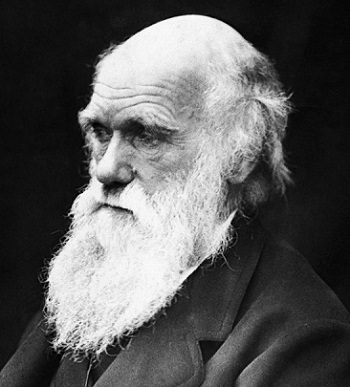
DARWIN’S EARLY YEARS
Charles Darwin was born in England on February 12, 1809. His father Robert Darwin was a wealthy physician. During his student days, Darwin dabbled in chemistry, geometry and medicine. Bored of lectures, and turned away by dissections of human bodies, he switched to zoology, and also attended lectures lectures on geology and theology. Later, he enrolled for the Arts in Cambridge, but managed to keep his interest in geology and zoology alive. His favourite pastime was collecting different species of beetles and examining rocks. After his course in Cambridge, he was offered the position of Naturalist on the HMS Beagle, a British Royal Navy survey ship. That was the beginning of an amazing journey.
A VOYAGE THAT CHANGED HIS LIFE
The five years Darwin spent on the Beagle were fantastic. He travelled extensively collecting samples of flora, fauna and fossils. The turning point of his journey however, was the ecologically rich Galapagos Islands. Remember, I come from there. The Galapagos are a group of 19 islands and about a hundred islets off the coast of Ecuador in South America. Darwin’s observation of different species across the islands led to significant findings which helped him arrive at his Theory of Evolution by Natural Selection.
HOW WE CREATURES CONTRIBUTED TO DARWIN’S THEORY
You must be wondering how I’m connected to the whole Evolution Theory. Well, when Darwin went island-hopping in the Galapagos, he realised that our species, just like many others – such as the marine iguanas, finches and mocking-birds on the islands – was not fixed, but had changed with time and local conditions. For instance, my ancestors who had lived on well-watered lands with shorter vegetation had dome-shells, whereas the others who inhabited the dry parts of Galapagos with taller vegetation had longer necks and saddlebacks. Similarly, mocking-birds across different islands had variations in plumage and size and shape of the bill. The iguanas that had drifted to the Galapagos had with time beautifully adapted to life in water to become marine iguanas. When Darwin noted these differences, he realised that stability of species didn’t exist. Instead, they kept evolving using the process of stability of species didn’t exist. Instead, they kept evolving using the process of natural selection and contributing to diversity of life.
THE RUN-UP TO A LANDMARK
After the voyage, Darwin returned to England in 1836 and started putting together his findings. In 1842, he wrote a complete paper on evolution by natural selection, but did not circulate or publish it. In 1848, he wrote a paper on how different species of finches on the Galapagos actually descended from the same ancestor and evolved over time. He kept writing, but mostly kept his papers private. It was at this time that his admirer and naturalist Alfred Russel Wallace had set sail independently and hit upon the theory of natural selection. He wrote to Darwin about it and sought his advice on how to disclose his own works at this juncture, but was in a dilemma. He contacted Britain’ leading Natural History body, the Linnean Society, and asked for both his and Wallace’s work to be presented simultaneously. Unfortunately, he could not make it to the event because of tragedy on the home front. Darwin had lost his 18-month son to scarlet fever.
SCIENCE, SPECIES, MANY STEPS FORWARD
In 1859, his book “On The Origin of Species by Means of Natural Selection” was published. All the 1,250 copies were sold out. Six significantly updated editions followed. The book established the theory of evolution on the basis of biological sciences – that all species evolved from earlier species – and that included humans! He said all living things struggle to survive. They survive because they adapt to the environment and pass on their traits to their young ones. Sometimes, the change can be so drastic that they evolve into a completely different organism. It shocked the world community, since it was widely believed till then that animals were made differently by the same creator. He provided compelling evidence from his research and specimen collection over the years. The book became a major work in the field of evolutionary biology. It stirred debates and discussions in all spheres – science, religion and philosophy.
WHAT AFTER ORIGIN?
Darwin went on to write his next big book “The Descent of Man” in which he established that humans shared on humans shared an ancestor with the apes. The Victorian society of his time however was deeply divided on the subject. It was a huge challenge to orthodoxy, though many renowned thinkers seemed to secretly agree with it. More books such as “Selection in Relation to Sex” followed until health problems overtook his life. Darwin died at the age of 73 and was buried in Westminster Abbey in London, near Sir Isaac Newton’s tomb. Darwin had married his cousin Emma Wedgewood at the age of 29. The couple had 10 children out of which three did not make it past childhood. Three sons George, Francis and Horace became famous scientists and served as Fellows in the Royal Society.
Picture Credit : Google




